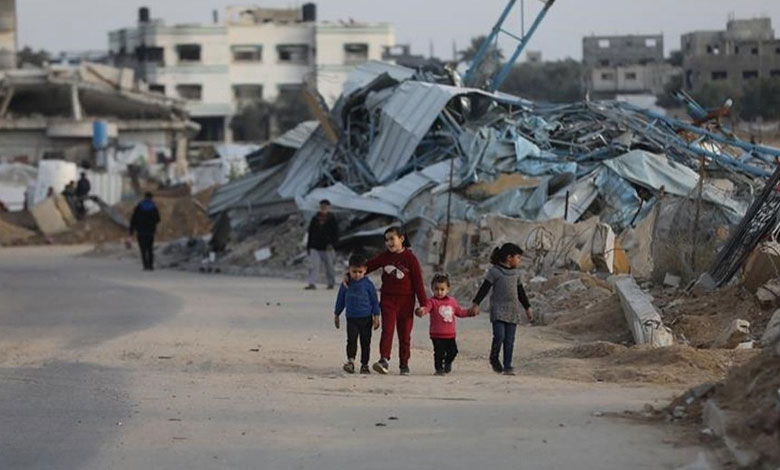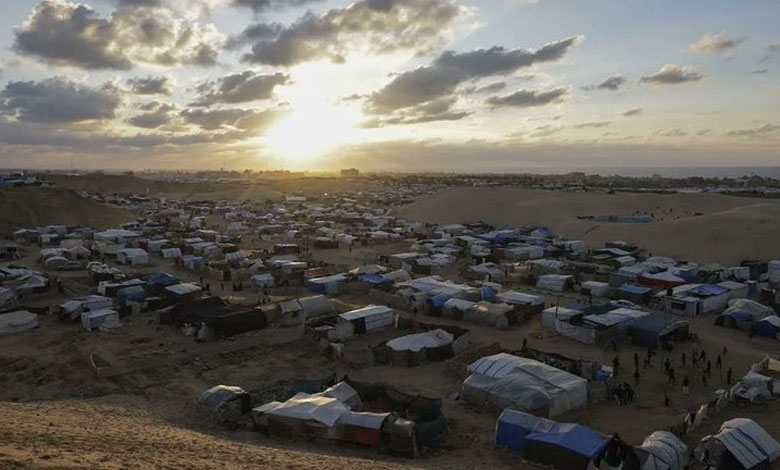Deadline Passes Without Gaza Ceasefire as Israel Demands Hostage List
The deadline for a ceasefire in the Gaza Strip passed without an agreement on Sunday morning as Israeli Prime Minister Benjamin Netanyahu insisted that the truce would not begin until Hamas provided a list of three hostages it had committed to release.

The deadline for a ceasefire in the Gaza Strip passed without an agreement on Sunday morning as Israeli Prime Minister Benjamin Netanyahu insisted that the truce would not begin until Hamas provided a list of three hostages it had committed to release. The dispute over the hostage list caused the ceasefire to be delayed beyond the agreed-upon start time of 8:30 AM local time.
Table of Contents
Israeli Military Continues Operations
Despite the delay, Israeli military forces, led by Rear Admiral Daniel Hagari, confirmed that they would continue operations inside Gaza until Hamas met its obligation to provide the names of the hostages. The military spokesman reiterated that the Israeli army would not halt its offensive until the terms of the ceasefire were met.
Hostage List Dispute
Netanyahu made it clear that the ceasefire would not be implemented until Israel had received the full list of hostages to be freed, as per the agreement. Hamas, on the other hand, attributed the delay in providing the list to “technical field reasons” but reaffirmed its commitment to the ceasefire deal.
Ceasefire Agreement and Humanitarian Impact
The planned ceasefire was part of an agreement brokered through extensive mediation by the United States, Qatar, and Egypt. The first phase of the ceasefire is expected to last 42 days, during which 33 hostages would be returned from Gaza, and hundreds of Palestinian prisoners and detainees would be released. Israeli forces are set to retreat into a buffer zone within Gaza, and displaced Palestinians should begin returning to their homes. Additionally, the ceasefire would allow for a significant increase in humanitarian aid to the Gaza Strip.
This ceasefire represents the second such pause in the ongoing conflict, which began on October 7, 2023, following a Hamas-led attack on southern Israel. While the ceasefire is seen as a critical step in ending the 15-month war, major concerns remain about the potential for renewed fighting after the first phase ends. Negotiations for the more difficult second phase of the ceasefire are expected to begin in two weeks.
Growing Humanitarian Crisis
As the deadline passed, Palestinian residents began returning to their homes in parts of Gaza City, despite ongoing shelling near the Israeli border. Many families, weary from the constant violence, were seen walking back to their homes, carrying their belongings on donkey carts. However, residents reported continued explosions and shelling in areas closer to the border, signaling that tensions are far from over.

The humanitarian toll of the conflict has been staggering, with over 46,000 Palestinians killed, according to Gaza’s Health Ministry. The war, which was triggered by the October 7 Hamas-led attack, has also caused extensive damage to Gaza’s infrastructure, leaving nearly 90% of the population displaced. The United Nations has warned that rebuilding Gaza will take years, even if the ceasefire eventually holds.
International Pressure for a Deal
Israel’s Cabinet approved the ceasefire deal on Saturday during a rare session held during the Jewish Sabbath. The agreement came after intense pressure from the Biden administration and President-elect Donald Trump to finalize a deal before the US presidential inauguration on Monday.
Also Read: Trump’s Bold Day One: Over 100 Executive Orders Ready to Reshape America
The future of Gaza remains uncertain, with political and security issues still unresolved. As the ceasefire enters its first phase, the international community remains closely watching to see if peace can finally be achieved after over a year of intense conflict.
